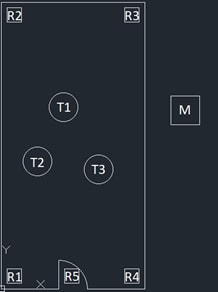LoRa Location Tracker Part 1: Introduction
Follow articleHow do you feel about this article? Help us to provide better content for you.
Thank you! Your feedback has been received.
There was a problem submitting your feedback, please try again later.
What do you think of this article?
Nowadays in Hong Kong, the demand for elderly homes is increasing. At the same time, it also increased the workload of the staff. In addition to taking care of the elderly, they must also be vigilant to monitor the elderly around the venue. It shows that tracing objects are very important in many applications.
Usually, GPS is the most popular tool to trace objects or people. However, in Hong Kong, there are many tall buildings, and the performance of GPS (Global Positioning System) tracking is significantly degraded in this environment. Moreover, GPS cannot work properly in an indoor environment.
So, I decided to use LoRa to solve the above problems. The advantage of LoRa is that it can carry over long-distance, low-power, low-cost data transmission. Setting up modules in a densely populated place like Hong Kong seems to me that LoRa is a better choice.
The setup of my idea
My idea is very simple, suppose the user wears a LoRa transmitter and sets up at least 5 LoRa receivers with a microcontroller in the venue (every conner setup one receiver and one receiver set up in the exit).
By measuring the RSSI value between the target (user) and receiver, then through Wi-Fi to transmit the RSSI value back to Master and calculate the location of the target.
I suppose it can trace his/her location in an indoor venue and avoid them leaving the venue.
Target: T1, T2, T3
Receiver: R1, R2, R3, R4, R5
Master: M
What is LoRa?
LoRa (Long Range) is one of the most popular LPWAN (Low Power Wide Area Network) technologies. It supports long-range communication, and its power consumption is low. LoRa uses license-free sub-gigahertz radio frequency bands, different regions have different frequency bands. In Europe, LoRa operates in the 433 MHz and 863 to 870 MHz Frequency Band. In the United States, operates in the 902 to 928 MHz Frequency Band. In Asia, operates in the 433 MHz and 923 MHz Frequency Band.
Feature:
- LoRa (Long Range)
- Derived from Chirp Spread Spectrum
- Long-Range Transmission
- Low power
- Wireless
Comparison of Wireless Communication Technology
|
Technology |
Wireless Communication |
Range |
Tx Power |
|---|---|---|---|
|
LoRa |
LPWAN |
2-5 km (urban) 5-15 km (rural) > 15 km (LOS) |
20 mW |
|
Wi-Fi |
Short-range |
50 m |
80 mW |
|
3G/4G |
Cellular |
5 km |
5000 mW |
|
Bluetooth |
Short-range |
10 m |
2.5 mW |
|
RFID |
Short-range |
1-2 m (LF) Max 1.5 m (HF) 30 cm – 3 km (UHF) Up to 100 m (SHF) |
1mW to 31.62mW |
|
GPS |
Satellite |
Only suitable for outdoor |
44.8W |
Further Development:
At present, how to use LoRa to track the target position is still a concept and idea. In the future, I will build a real module to prove whether LoRa can be used to track targets accurately.
In Part 2, I will deeply focus on how to get the RSSI value and how to convert the RSSI value to the distance.


